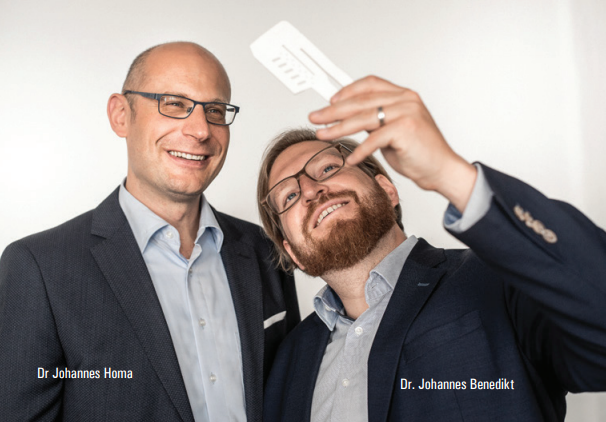With the advent of Industry 4.0, Additive manufacturing (AM) has emerged as a disruptive technology to produce high value and complex geometrical components that is not achievable by conventional manufacturing. However, most industrial 3D printers still lag behind traditional mechanised equipment in terms of speed and efficiency. Currently, the AM industry is stifled by the lack of a standard database of printing parameters and defined specifications for every material. As a result, it is challenging to achieve a consistent 3D printing process and often, companies seeking to adopt AM are faced with the need to buy disparate solutions which creates inefficiencies in the workflow. That said, today’s product development challenges of quality, reproducibility and functionality have promoted ceramics massively to be an exciting new area of application for 3D printing technologies. This is where, one company, Lithoz, is revolutionising the AM industry.
The company specialises in the development and production of materials and additive manufacturing systems for the 3D printing of bone replacement material and highperformance ceramics. Through interdisciplinary collaboration between specialists in the areas of mechanical engineering, process engineering and chemistry, Lithoz has successfully developed a manufacturing system for the additive manufacture of ceramics suited to industrial and medical applications.
“We support our customers throughout the manufacturing process chain, beginning from the designing phase to the end of post-processing phase,” explains Dr Johannes Homa, CEO of Lithoz. To help companies scale AM at the industrial level, Lithoz offers customer-specific solutions, along with expert and specialist advice across the entire value chain from conception to production and postprocessing of the product including hardware and software aspects. Powered by Lithography-based Ceramic Manufacturing (LCM) technology, Lithoz’s industry-oriented 3D printers facilitate efficient serial production of additively manufactured ceramics.
The firm’s AM CeraFab System is especially suited to producing highly precise components for complex applications that meet the high levels of density, stability and precision required by the ceramics industry. The CeraFab System incorporates up to four production units with an increased building speed to significantly accelerate time-tomarket and productivity. Another key offering is Lithoz’s CeraFab Control, a robust database-driven software platform that allows users to trace and analyse production-related data for greater efficiency in manufacturing.
With the integration of tried-and-tested process parameters for all-ceramic materials—job preparation becomes more straightforward and intuitive. Users are granted the ability to optimise actionable data and make real-time adjustments to advanced printing parameters and the building process for maximum productivity. “Lithoz views its customers as partners and focuses on-boarding them to master our technology swiftly through tailored training and highquality consultation services,” states Dr Homa. As the leading technology provider of additive manufacturing systems for high-performance ceramics, Lithoz has in-house experts with over a decade of experience in areas such as ceramics engineering and technology, polymer chemistry and software engineering.
The company offers various training courses to allow users to gain an in-depth understanding of the operating principles of firm’s 3D Printer which will enable them to optimise AM processes and produce high-quality parts at an industrial level. These training courses are individually tailored to suit different requirements and levels of client’s experience in AM. Customers are supported at every step of the training process with tried and trusted industrial equipment and manufacturing parameters (i.e. printing, debinding, sintering) based on the extensive experience of Lithoz’s engineers and experts.
To further illustrate the efficacy of Lithoz’s solutions, Dr Homa, cites a case-study, where, one of the most prominent nuclear labs in the U.S, Sandia National Labs (SNS), California, approached them for assistance. As a contractor for the U.S. Department of Energy’s National Nuclear Security Administration (NNSA), SNS had a particular requirement of printing their materials for sensitive applications. Lithoz were able to convert SNS’ ceramic powders into principle form and achieve the desired result. Also, SNS were guided by experts at Lithoz through the process of setting-up their printing in-house. In recent years, the AM industry has made a quantum leap forward by expanding a list of standards as well as developing enhanced and robust systems to create improved materials and solutions. As the industry matures and challenges get addressed, the rate of AM adoption will only increase.
Lithoz was founded in 2011 to provide a manufacturing process that enables companies to overcome the limitations of conventional manufacturing methods. The firm’s quality policy was devised, taking into consideration the requirements and circumstances of the ceramics industry. “As industrialisation is a key area for us, we plan to broaden our technological basis further to complement our solutions and offerings,” concludes Dr Homa. We support our customers throughout the manufacturing process chain, beginning from the designing phase to the end of the post-processing phase.
With the integration of tried-and-tested process parameters for all-ceramic materials—job preparation becomes more straightforward and intuitive. Users are granted the ability to optimise actionable data and make real-time adjustments to advanced printing parameters and the building process for maximum productivity. “Lithoz views its customers as partners and focuses on-boarding them to master our technology swiftly through tailored training and highquality consultation services,” states Dr Homa. As the leading technology provider of additive manufacturing systems for high-performance ceramics, Lithoz has in-house experts with over a decade of experience in areas such as ceramics engineering and technology, polymer chemistry and software engineering.
The company offers various training courses to allow users to gain an in-depth understanding of the operating principles of firm’s 3D Printer which will enable them to optimise AM processes and produce high-quality parts at an industrial level. These training courses are individually tailored to suit different requirements and levels of client’s experience in AM. Customers are supported at every step of the training process with tried and trusted industrial equipment and manufacturing parameters (i.e. printing, debinding, sintering) based on the extensive experience of Lithoz’s engineers and experts. To further illustrate the efficacy of Lithoz’s solutions, Dr Homa, cites a case-study, where, one of the most prominent nuclear labs in the U.S, Sandia National Labs (SNS), California, approached them for assistance. As a contractor for the U.S. Department of Energy’s National Nuclear Security Administration (NNSA), SNS had a particular requirement of printing their materials for sensitive applications. Lithoz were able to convert SNS’ ceramic powders into principle form and achieve the desired result. Also, SNS were guided by experts at Lithoz through the process of setting-up their printing in-house.
In recent years, the AM industry has made a quantum leap forward by expanding a list of standards as well as developing enhanced and robust systems to create improved materials and solutions. As the industry matures and challenges get addressed, the rate of AM adoption will only increase.
Lithoz was founded in 2011 to provide a manufacturing process that enables companies to overcome the limitations of conventional manufacturing methods. The firm’s quality policy was devised, taking into consideration the requirements and circumstances of the ceramics industry. “As industrialisation is a key area for us, we plan to broaden our technological basis further to complement our solutions and offerings,” concludes Dr Homa.
Published by Manufacturing Technology Insights

